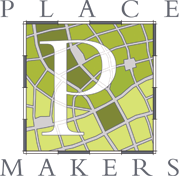A Placemaking Journal
Aggravated 15 Year Olds as a Measure of Place
I’m always on the lookout for simpler ways to make important points about how we grow. Ways that people intuitively understand, and can easily share with others.
Regular readers here may recall the last time I talked about this, when my mention of the neighborhood-measuring popsicle test — the ability of an 8 year old to safely get somewhere to buy a popsicle, then make it home before it melts — experienced a healthy does of viral replication across the interwebs.
It made for a good lesson, and I’ve continued to look for similar hooks in the time since.
Cars and kids, our two favorite things
A few years ago in my local downtown, the owners of a 60s-era office tower began exploring options for the redevelopment of their parking lot, which fell between the building and an adjacent historic neighborhood.
Not surprisingly, many of the neighbors weren’t thrilled with the proposal. The parking lot may have been a giant, unsightly heat island. It may have contributed to toxic particulate runoff. It may have even represented the significant misallocation of key downtown property, with little in the way of financial returns for the city, but it was also something else. It was predictable, and predictability is something people value.
Of course, no one wants to be seen as the person arbitrarily advocating for the preservation of a giant parking lot, so various neighbors began coming up with more specific and relatable ways to describe the value of the present situation.
One of the most memorable was this: It’s the only place in town where you can teach your teenager to drive.
I’m assuming this makes sense to everyone but just in case: Because it served a single-use building, the parking lot was routinely empty on weekends and, for years, people had used it as a driver’s ed instructional zone. Wide open with few to no trees, it was a perfect spot to ensure your budding driver didn’t ding your car — or worse — in the process of mastering the basics.
That’s all well and good. It’s even got a nice sentimental component because it involves the transfer of skills and knowledge from parent to child. But I gotta ask: Does it really justify putting a city’s economic, environmental, and/or social goals on hold just to keep it going?
A new measure
And thus, a new proposal: One measure of a good place is the absence of infrastructure suitable to new driver education. Or, perhaps, an inverse relationship. As suitable locations go down, value (by multiple measures) goes up.
No good spots might be an indicator that your town has reasonable parking requirements. Or, it might demonstrate that the parking you do have is shared in ways that keep it in use at all times. Or, it could show that your town prioritizes human habitat over just the raw mechanics of car storage.
It could even be all of these things. But the one thing it’s not is an indicator of productive land wasted. And that’s a good start towards making a place worth inhabiting.
Your charge
So here’s your next step. Grab your teenage kid (or borrow a neighbor’s) and tell them you’d be happy to take them out for an introductory driving lesson. If their response is that there’s nowhere suitable to go, you’ll know you’re on the right track.
And besides, can’t all that instruction be done with simulators now? The 15-year old can probably tell you that, too.
–Scott Doyon
If PlaceShakers is our soapbox, our Facebook page is where we step down, grab a drink and enjoy a little conversation. Looking for a heads-up on the latest community-building news and perspective from around the web? Click through and “Like” us and we’ll keep you in the loop.










